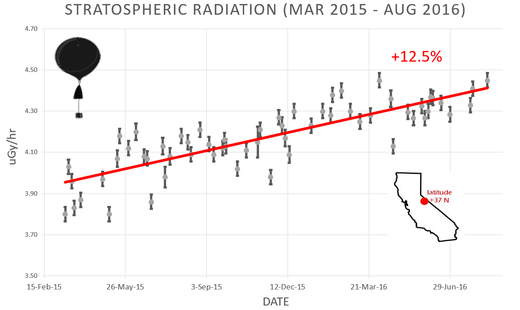Cosmic rays, which are accelerated toward Earth by distant supernova explosions and other violent events, are an important form of space weather. They can seed clouds, trigger lightning, and penetrate commercial airplanes. Furthermore, there are studies ( #1, #2, #3, #4) linking cosmic rays with cardiac arrhythmias and sudden cardiac death in the general population.
Comment: And so much more. In fact, cosmic rays may effectively modulate all life on Earth.
Why are cosmic rays intensifying? The main reason is the sun. Solar storm clouds such as coronal mass ejections (CMEs) sweep aside cosmic rays when they pass by Earth. During Solar Maximum, CMEs are abundant and cosmic rays are held at bay. Now, however, the solar cycle is swinging toward Solar Minimum, allowing cosmic rays to return. Another reason could be the weakening of Earth's magnetic field, which helps protect us from deep-space radiation.
There's a new section of our website where you can monitor cosmic rays in the atmosphere. From here, scroll down a few inches to find the latest measurements, the date of the next balloon flight, and more information about the data and sensors.




No no no! Get with the program; it's human-induced global warming at the heart of this. 97% of climate scientists agree.